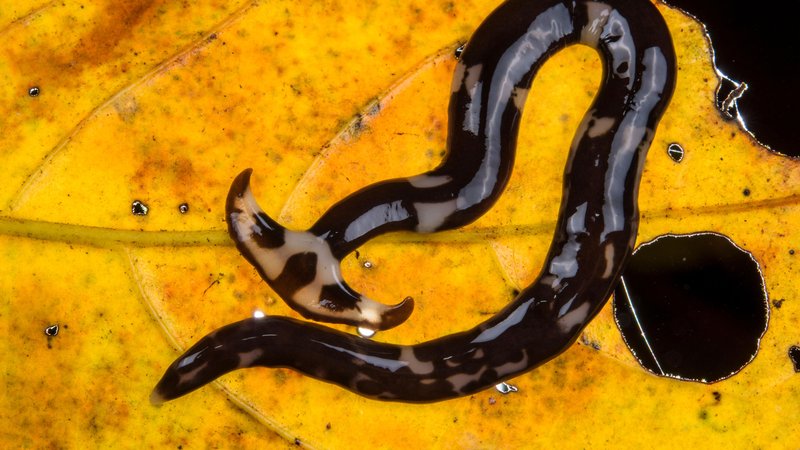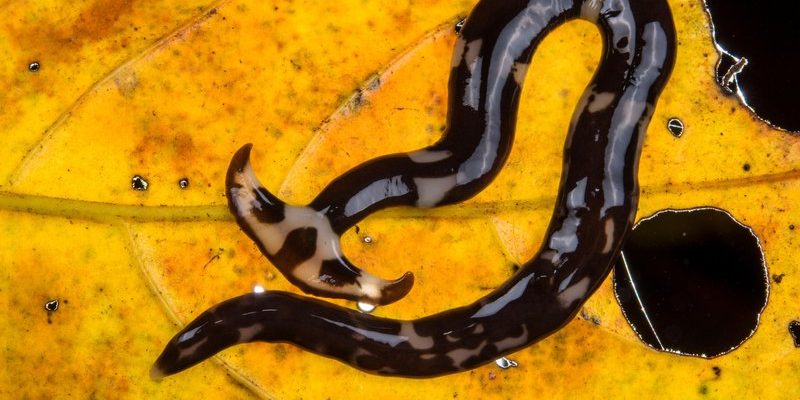
Think of hammerhead worms as the “bad boys” of the soil. They have a distinct, flattened head that resembles a hammer—and their presence can put your beloved plants at risk. If you’re wondering how to spot these unwelcome intruders, you’re in the right place. Let’s dive into the signs that your garden may be hosting these pesky pests.
What Are Hammerhead Worms?
Hammerhead worms, scientifically known as *Bipalium spp.*, are flatworms native to Southeast Asia. They have made their way around the globe, mostly hitching rides in soil or potted plants. Their appearance is quite striking, with a broad, flat head that gives them their nickname. While they might look interesting, these worms can be detrimental to your garden.
These worms are carnivorous, feeding on earthworms and other soil-dwelling critters. While they won’t necessarily harm your plants directly, they can disrupt the ecosystem in your garden, leading to weaker plants due to a loss of vital soil organisms. You might be thinking, “So what? A few worms can’t hurt, right?” Unfortunately, their presence can indicate deeper issues in your garden’s health.
Signs of Hammerhead Worm Infestation
So, how can you tell if your garden is infested with hammerhead worms? Here are some common signs to watch for:
- Presence of the Worms: The most direct sign is seeing the worms themselves. They’re often found lurking near the soil surface, especially in moist areas.
- Absence of Earthworms: If you notice a decrease in your earthworm population, it may be an indication that hammerhead worms are taking over.
- Unusual Soil Activity: If your soil appears overly disturbed or lacks the usual beneficial insects, it might be time for a closer inspection.
Spotting these signs early can make a huge difference in managing a hammerhead worm infestation before it escalates.
Identifying Hammerhead Worms
You’ll want to accurately identify a hammerhead worm before jumping to conclusions. These slimy creatures can vary in color, from shades of brown to dark grey, and they can also be quite large, usually ranging from 6 to 12 inches long. When they move, they glide smoothly, almost like they’re swimming through the soil.
Their most defining feature is, of course, their hammer-shaped head. You might think they look a bit like a flattened version of a traditional worm, but their head shape sets them apart. If you’re ever uncertain, consider taking a photo and comparing it against online resources to confirm it’s a hammerhead worm.
Why Hammerhead Worms Are Problematic
You might be wondering, “What’s the big deal about a few worms?” Well, here’s the thing: while hammerhead worms primarily target earthworms, their presence can disrupt the entire garden ecosystem. Earthworms are crucial for soil health, helping with aeration and nutrient cycling. So, without them, your garden could suffer.
Moreover, if left unchecked, hammerhead worms can lead to a *cascade effect* in your garden. This means that as the earthworm population declines, the soil health deteriorates, which could lead to weaker plants that are more susceptible to pests and diseases. In essence, a hammerhead worm invasion could trigger a chain reaction that damages your garden’s overall vitality.
How to Manage a Hammerhead Worm Infestation
If you notice signs of a hammerhead worm infestation, don’t panic! There are steps you can take to manage the situation. Here are some effective methods:
- Manual Removal: If you spot them, carefully remove the worms. Use gloves to prevent contact with their slimy bodies, and dispose of them in a sealed bag.
- Environmental Adjustments: Hammerhead worms thrive in moist environments. Improving soil drainage can help deter them.
- Biological Control: Encouraging natural predators, like birds or other beneficial insects, can help keep their population in check.
Taking proactive measures can keep your garden safe and sound.
Prevention Tips for Your Garden
Prevention is always better than cure. Here are some easy tips you can implement to keep hammerhead worms at bay:
- Rotate Your Crops: Changing where you plant each year can help disrupt any potential infestations.
- Avoid Overwatering: Since hammerhead worms thrive in moist conditions, watering your garden appropriately can help reduce their presence.
- Use Quality Soil: When adding soil or mulch, ensure it comes from a trusted source to avoid introducing these worms into your garden.
By being proactive, you can enjoy a flourishing garden free of hammerhead worm troubles.
Keeping your garden healthy is all about being aware of what’s going on beneath the surface. Recognizing the signs of a hammerhead worm infestation early on can help you take action before they wreak havoc. Remember, hammerhead worms might seem fascinating, but they’re not friends to your garden.
By knowing how to identify these worms, understanding their impact, and taking preventive steps, you can create a thriving environment for your plants. Happy gardening, and may your plants flourish without the unwelcome presence of those pesky hammerhead worms!

